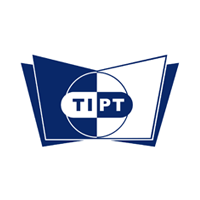
In the pharmaceutical industry, small samples of drugs or other materials are routinely tested to help ensure that they are safe and consistent. To determine how these sample batches of pharmaceutical products are tested, drug makers and health regulators develop and implement what are called sampling plans.
During your pharmaceutical quality assurance training, you will study sampling plans as part of your core modules. Since sampling plans are considered an essential component of good manufacturing practices (GMP) in the pharmaceutical industry, understanding them is an important skill to have in a pharmaceutical quality assurance career.
Sampling Plans Are a Key Concept in Pharmaceutical Quality Assurance
First, let’s take a brief look at what a sampling plan actually is. In the pharmaceutical industry, a sampling plan is a method for deciding whether to accept or reject a batch of materials. The sampling plan sets out what will be tested, when and how it will be tested, and the measurements for determining whether the sample that is being tested will be accepted or rejected.
A sampling plan can help verify the identity of a sample, ensure that correct supplies and materials have been delivered, and confirm that there are no serious defects with a product. Sampling plans are considered a key component in pharmaceutical quality assurance and quality control and they are used by drug makers, government regulators, and other parties, such as non-governmental organizations and consumer advocacy groups, which may have an interest in ensuring the safety of pharmaceutical products.
For example, before a pharmaceutical manufacturer releases a batch of new drugs to the public, it will test a sample of that batch to determine whether or not it is safe for public consumption. During the sampling stage, tests may uncover that a batch was contaminated during the manufacturing process, which could require changes be made to that process to ensure that future batches are free of contaminants.

Pharmaceutical Sampling Plans Vary Depending on a Number of Factors
Not all sampling plans are the same. Different sample sizes, methods, and acceptance/rejection rates are used when creating sampling plans for various situations. For example, if a drug manufacturer is receiving raw material from a supplier that they have worked with previously, and whose products they have tested in the past, then the sample plan may be less stringent than if the raw material arrived from a new or unknown supplier. Likewise, sampling plans are more stringent for materials that are considered critical to the final product, or if there has been a history of defects showing up in the material.
Sampling Plans Are Used Throughout the Pharmaceutical Industry
Sampling plans are used extensively in the pharmaceutical industry, including during the testing, development, and manufacturing of drugs, which is why emphasis is placed on learning about them in quality assurance courses.
Drugmakers typically sample batches of raw materials sent by suppliers and test samples of drugs manufactured at their own facilities before they are sent to pharmacies and hospitals. However, drugs and their raw materials aren’t the only products that are tested. In fact, packaging materials, cleaning agents, and medical devices are also subject to sample tests.

Samples of pharmaceutical products may also need to be tested in order to clear customs. Government regulations likewise require drug companies to retain samples of drugs sold in Canada. These samples are retained in case a problem with the drug arises after it has been sold to consumers. The retained samples allow regulators to inspect possible defects or problems with the drug.
Do you want a career in pharmaceutical quality assurance?
Contact the Toronto Institute of Pharmaceutical Technology to learn more about our programs.

I am a pharmacist. I am working in the pharmaceutical industry for 10 Years in the Quality Assurance department. Initially, I have worked in the IPQC section which is in process control of intermediate and bulk products. I have to perform the in-process inspection of solid products(Tablet, Capsule, PFS, Sachet)& Liquid dosages form( SVP, SVP, Oral), also Semisolid dosages form. I have managed all types of samples from intermediate and bulk stages and along with the retention sample. Then I have to work in the documentation section. I have work in the QMS section of the QA Department and performed the following activities like change control, Deviation management, CAPA, Internal Audite, and Recall for at least three years. Now I am working in the validation department. My core responsibility is to perform the cleaning validation, Hold t time study. I have training on PDE value preparation.